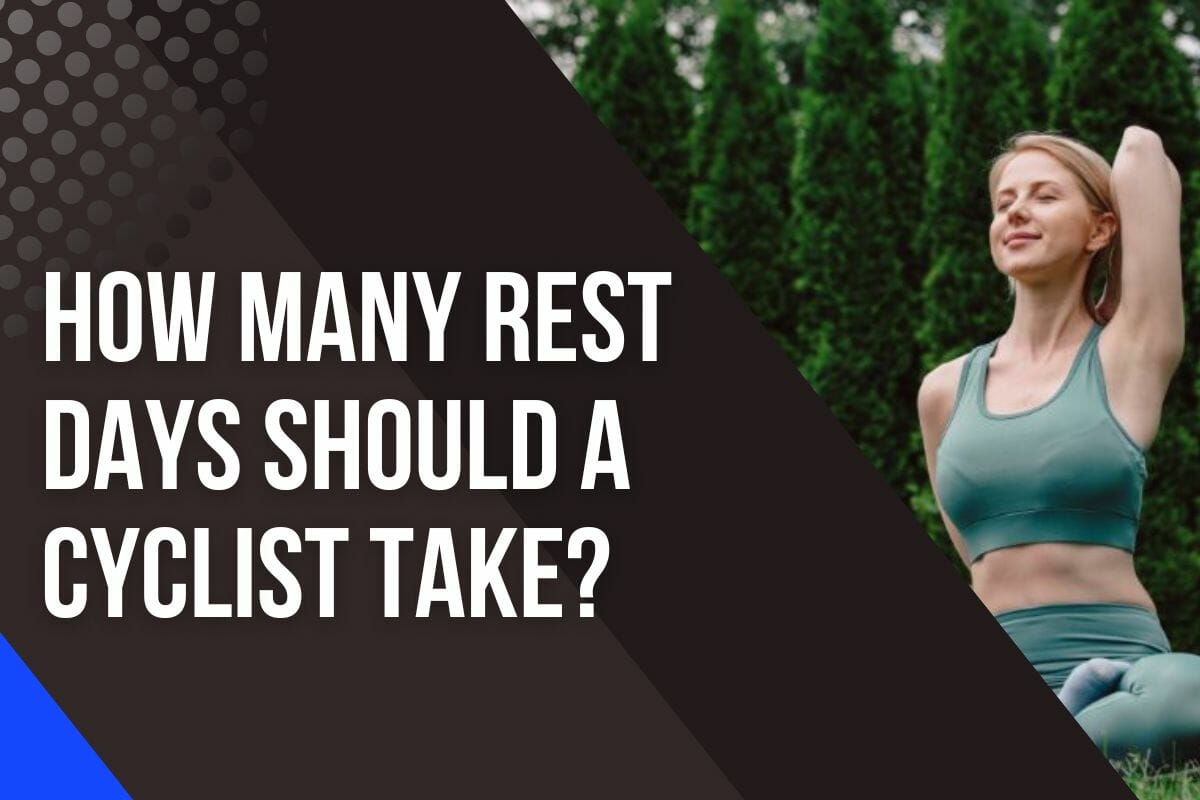How To Plan My Own Indoor Cycling Workout

Have you been looking for ways to challenge yourself and stay healthy during the winter months?
Indoor cycling has become a popular form of exercise and a great way to stay fit while staying safe during the pandemic.
As a professional cyclist with more than 10 years of experience riding outdoors and indoors, I can confirm that it’s important to know how to plan your workout from scratch.
By crafting a personalized training plan and using technology to track progress, you can maximize your performance and reap the many benefits that come with an effective indoor cycling workout.
So, let’s get started on planning your perfect ride!
Benefits Of Indoor Cycling Workouts
I love indoor cycling workouts because they’re so convenient, and the benefits are amazing.
Research in 2017 shows that indoor cycling was even better than bicycling in improving physical fitness.
Not only do I get a great workout in a safe environment, but it also helps me stay motivated and focused throughout the session.
The intensity level can be tailored to my needs, meaning I can either take it easy and enjoy some low-impact cardio or push myself with higher-intensity intervals.
Plus, I always feel more energized afterward.
When it comes to cardiovascular conditioning, indoor cycling is hard to beat.
Cycling boosts aerobic capacity and increases endurance by pushing the body’s cardiorespiratory system for extended periods.
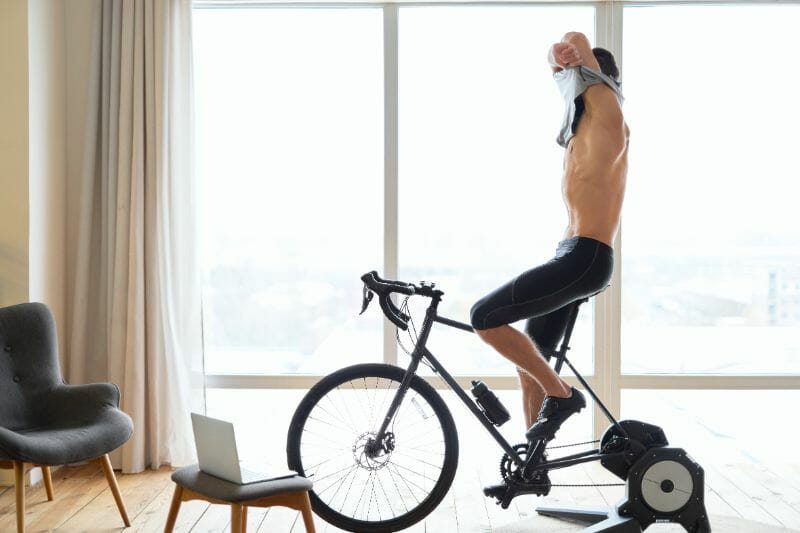
This strengthens the heart muscle, lowers blood pressure, and improves circulation throughout the body.
When done correctly with proper resistance settings, interval training on an indoor cycle helps build power in the legs faster than outdoor riding does.
Mentally speaking, taking part in an indoor cycling routine brings about a sense of accomplishment that often results in improved self-confidence as well as enhanced concentration levels during other activities outside of exercise.
Additionally, because cyclists have complete control over their intensity level, there are times during a session when riders can go beyond their typical limits while still feeling safe—which makes conquering those extra challenging hills quite satisfying!
With so many ways to reap rewards from this type of workout, planning your indoor cycling routine may be exactly what you need to take your fitness goals up a notch.
Identifying Goals And Motivation
When plotting out an indoor cycling workout, it’s important to identify your goals.
This will help you stay focused when training and ensure that you achieve success in the long term.
Setting Achievable Goals
When setting goals, it is important to be realistic – don’t over-commit or underachieve.
It can help to break down bigger tasks into smaller, more manageable ones.
You should also focus on the progress of your training rather than just achieving a certain goal in one session.
Personalizing your workout plan will make sure it meets all of your individual needs and helps keep up your enthusiasm.
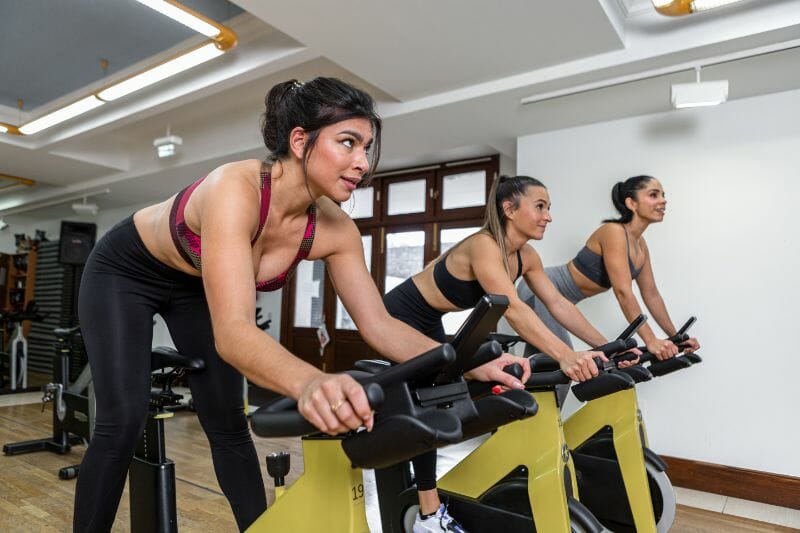
Take into account any limitations you may have about health and fitness levels when deciding which exercises are suitable for you.
Consider what type of intensity level works best for keeping yourself motivated throughout the workout: too low an intensity can lead to boredom; too high could result in burnout or injury.
It’s important to remember that no two workouts need to be identical – varying duration, intensity, and type of exercise is key for making each ride different yet still effective towards reaching overall fitness/performance objectives.
Make sure that every step taken along the way puts you closer to success by gradually increasing difficulty as confidence grows alongside strength and endurance levels.
Crafting A Personalized Training Plan
It doesn’t matter if you’re just starting or an experienced cyclist; crafting a plan that works best for you is key to exercising efficiently and safely.
Are you looking to increase speed, endurance, strength, etc.?
Knowing this will help guide how much time and effort should be put into each workout session.
From there, decide on the duration and intensity of each ride.
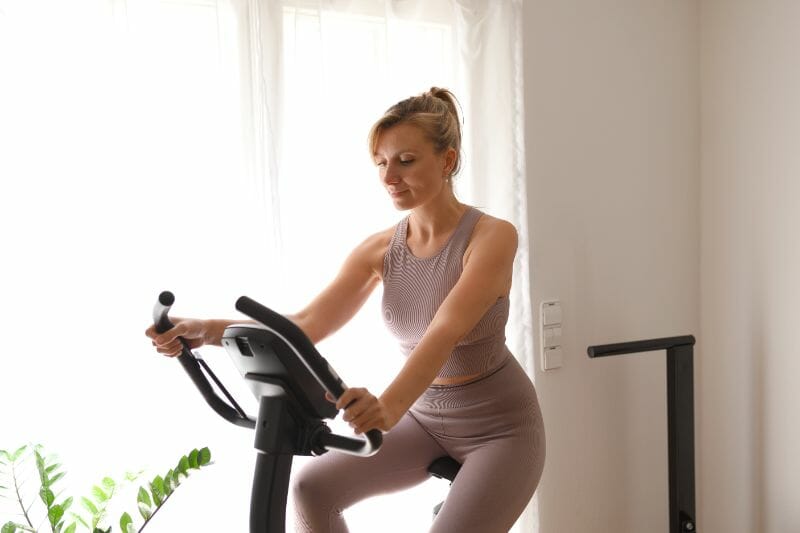
For example, if your goal is improving endurance, then longer rides with lower resistance levels may be more beneficial than shorter rides with high-intensity intervals.
Once you’ve figured out the details of your workouts, it’s important to stay consistent by scheduling them into your routine.
This means blocking off specific times throughout the week when you can dedicate yourself solely to riding.
Using Technology To Track Progress
Indoor cycling can be a great way to get in shape, but it’s important to have goals and track progress.
Fortunately, there are plenty of indoor cycling tracking apps available that make this easily such as Zwift and Trainer Road.
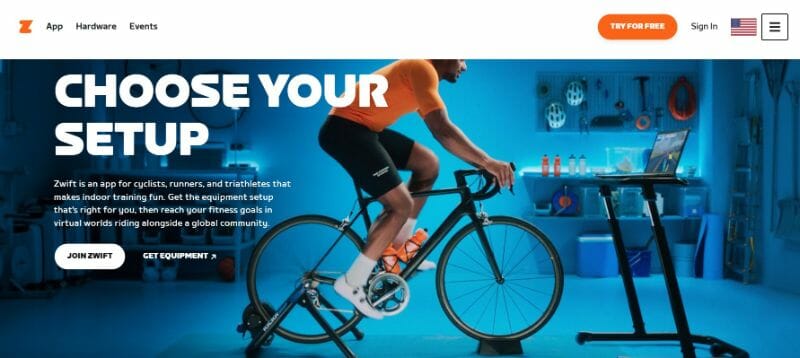
With the right technology, you can set up an interactive dashboard with real-time data on your performance during each session.
This allows you to easily monitor your progress and adjust your workout accordingly.
In addition to tracking performance metrics such as heart rate and power output, most modern indoor cycling tracking systems also offer more advanced features such as interval training programs and customizable workouts.
This makes it easier than ever before to craft personalized training plans tailored specifically for you.
The best part is that these apps provide detailed feedback after each session so you can see how close you’re getting to reaching your fitness goals.
Planning Your Workout
Staying motivated to complete your indoor cycling workout is essential, and having a plan in place is key.
Planning your indoor cycling workout can seem daunting at first, but with the right structure and guidance, it’s easy to create an effective ride.
Below, we explain everything you need to start riding.
1. Choosing The Right Bike
Your ride must be comfortable and adjustable so that you can customize it for maximum efficiency.
The best indoor bike should have features like a flywheel resistance system, which helps simulate outdoor terrain, as well as handlebars and seat adjustments so that you can adjust them to fit your body type.
If possible, try out any bikes before purchasing one to make sure they are suitable for your needs.
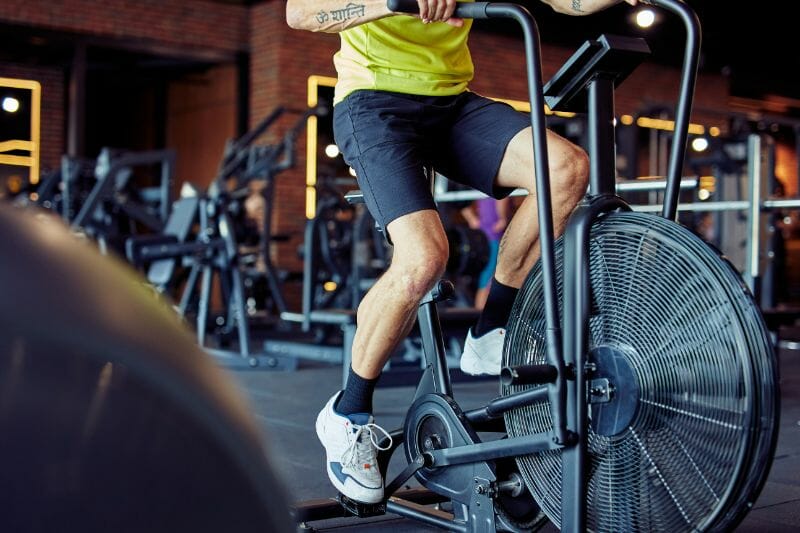
For those who don’t want the hassle of setting up their stationary bike at home, there are also options such as bike trainers that allow you to connect your existing bike wirelessly with virtual classes from the comfort of your living room.
This way, you still get the same benefits of having access to professional instructors and group rides without needing special equipment or additional space.
2. Deciding On Equipment And Accessories
In addition to an indoor cycling bike, additional cycling accessories should also be considered.
A pair of bike shoes will ensure more comfortable riding with increased efficiency as well as safety while braking and cornering.
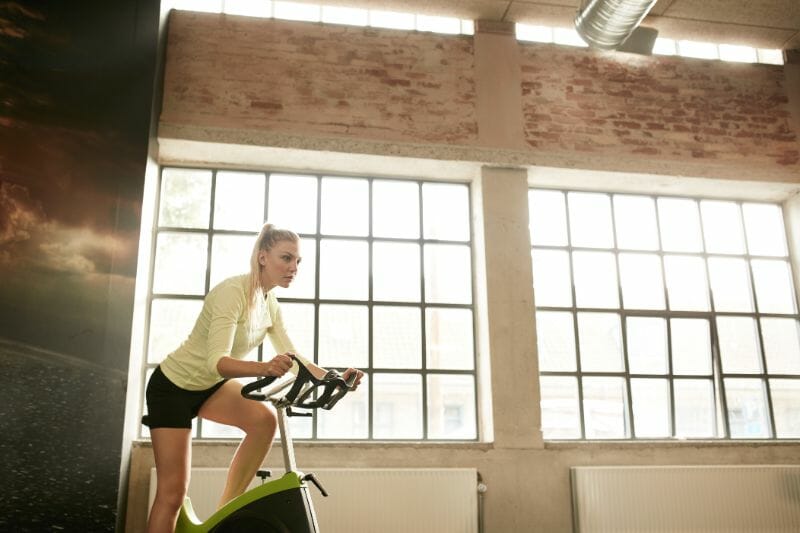
Bike pedals provide extra grip and control when pushing hard during workouts.
I also use a gel seat cover to keep me comfortable during long rides.
It absorbs shock from the road and provides some cushioning for my rear end—a must on those tough interval sessions!
3. Developing An Effective Warm Up
Now that you’ve decided on the right equipment and accessories for your indoor cycling workout, it’s time to develop an effective warm-up routine.
Before jumping into a strenuous ride, it is important to prepare your body with proper stretching exercises.
A good warm-up helps reduce the risk of injury and also boosts performance.
Here are some tips to make sure your warm-up is as effective as possible:
- Stretch all major muscle groups – Make sure to stretch both upper and lower body muscles before starting any exercise. This includes areas like legs, arms, shoulders, chest, back, glutes, and hamstrings.
- Incorporate dynamic movement – Dynamic stretches help increase blood flow to key muscle groups before a workout by mimicking movements used during the activity itself. Examples include arm circles or walking lunges.
- Include foam rolling – Foam rolling can be used after static stretching as part of a warm-up routine to target specific tight spots that may be present in certain areas of the body.
- Focus on breathing techniques – Focusing on deep breaths while stretching will ensure that oxygen gets circulated throughout the entire body which ultimately leads to better performance during physical activities.
Structuring The Ride For Optimal Performance
The first step in structuring a successful ride is determining its duration and intensity level.
This is based on your fitness level and what type of workout you’re looking for—speed work, endurance work, or something in between.
Once this is determined, you can move on to designing your intervals or setting up specific goals for each section of the ride.
A good rule of thumb is to aim for at least 30 minutes of continuous riding, but this can be adjusted depending on your fitness level and goals.
Additionally, make sure to have consistent breaks throughout the ride so you don’t become overly fatigued and lose focus.
Incorporating Interval Training
Interval training is a powerful tool for improving your indoor cycling performance.
It involves alternating periods of intense work with short recovery intervals, allowing you to push yourself harder and faster than normal while still giving your body time to recover.
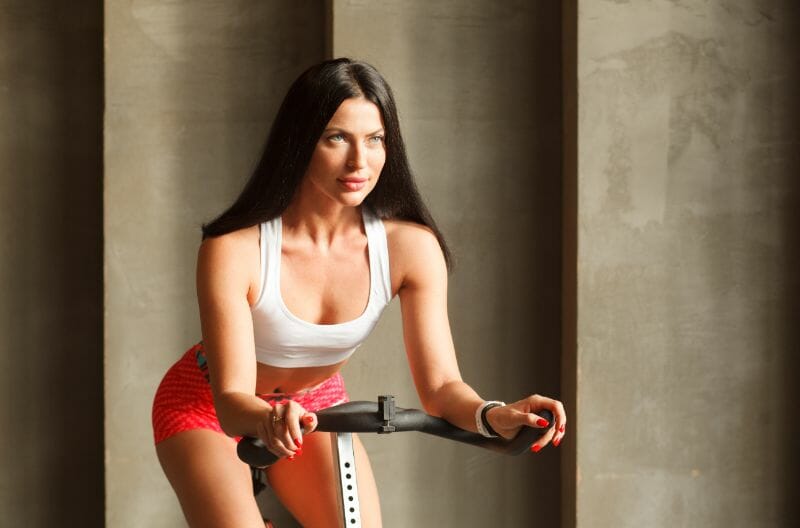
When incorporated into an indoor cycling workout, interval training can help take your fitness level up a notch.
If done correctly, these brief bursts of activity will provide an effective challenge without derailing any other goals for the day– such as endurance or recovery rides –and leave you feeling energized afterward!
Focusing On Technique And Form
The best way to improve your cycling technique is to focus specifically on training that targets proper form.
This can include drills such as standing intervals or hill sprints.
These exercises help you build muscle memory so that when you tackle longer rides, your body will already know how to move correctly.
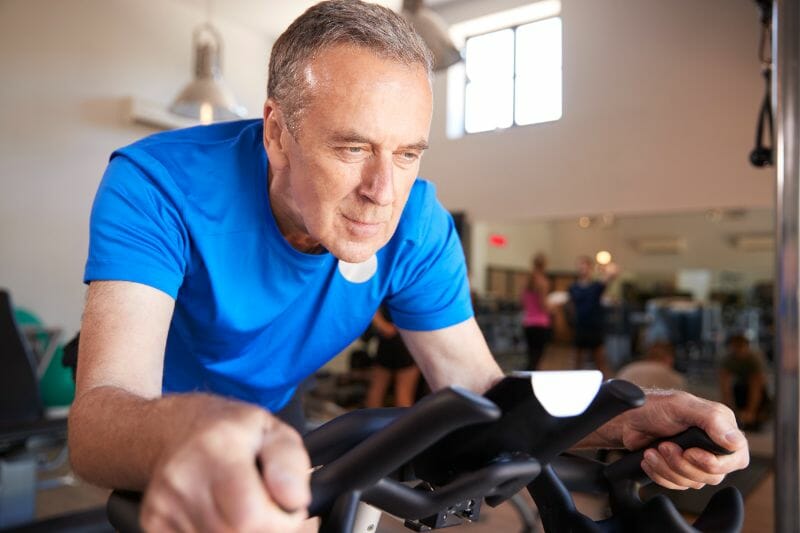
Practicing these drills regularly during workouts can also give you a better sense of balance and control over your bike.
In addition to targeted drills, having good posture while riding is essential to maximize performance and minimize fatigue.
Make sure your back isn’t hunched over the handlebars; instead, sit up straight with relaxed shoulders and keep your core engaged throughout the ride.
Adding Resistance To Increase Intensity
Resistance training helps develop the muscles used in cycling and will result in a more efficient ride overall.
It can also help you achieve greater endurance, speed, and power on the bike.
One of the most common methods for adding resistance to your workouts is by increasing the tension on your bike’s flywheel or chainring.
You can do this manually with a knob or lever located near the pedals of your bike.
Increasing resistance will require more effort from your legs as you pedal, resulting in enhanced intensity during each cycle session.
By incorporating various forms of resistance into your indoor cycling routine, you’ll be able to maximize cycling intensity while still ensuring that you stay within safe limits when exercising.
Cool Down And Recovery
When it comes to indoor cycling workouts, the cool-down and recovery phases should never be neglected.
This is the time when your body needs to relax and recuperate from the intense physical activity of your workout session.
After you’ve finished with your last sprint or interval, begin by slowing down gradually over a few minutes until you reach a slow but steady pace.
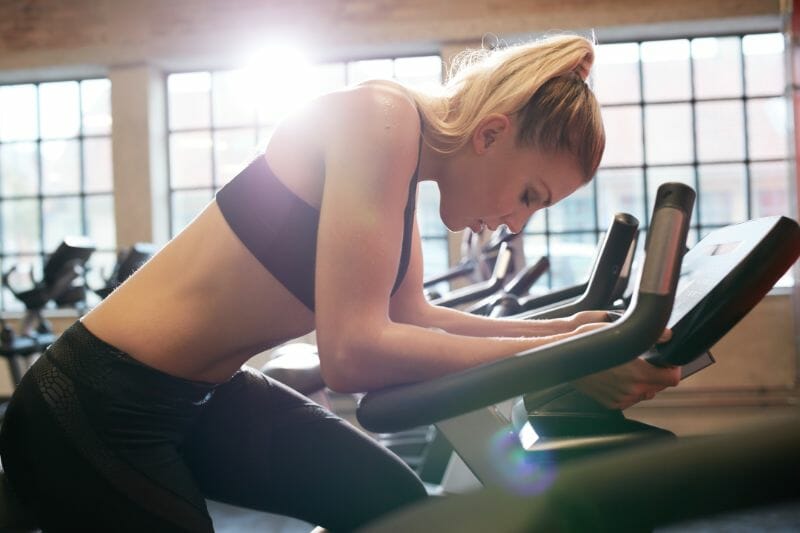
During this period, focus on taking deep breaths while keeping your shoulders relaxed.
Your muscles need some stretching after they’re done working hard – use dynamic stretches such as arm circles, side bends, and knee hugs to help maintain flexibility.
This helps reduce soreness in your muscles for the following days after an intense ride.
Remember that hydration is key during any exercise regime; make sure to drink water throughout and afterward to replenish lost fluids through sweat.
Finally, taking some time out for relaxation will go a long way toward aiding muscle recovery post-workout.
Consider doing yoga poses like downward dog or cat and cow pose to stretch out those tight spots in between sets of intervals.
Close off each session with mindfulness meditation or breathing exercises if possible – these can help clear away racing thoughts from all that intensity!
Be sure to schedule your rest days each week for maximum recovery.
Nutrition for Cycling Performance
As a cyclist, I understand the importance of nutrition for performance.
Eating the right foods before and after a ride can make all the difference in how well you perform during my cycling sessions.
Before each ride, make sure to eat a balanced meal that provides my body with enough energy to fuel me through the entire session.
This usually consists of complex carbohydrates such as whole grains, fruits, and vegetables along with lean proteins like fish or chicken.
After a ride, it’s important to refuel your body with proteins and carbohydrates to help repair and rebuild muscle tissue.

I typically opt for foods like Greek yogurt or a protein shake along with healthy fruits and vegetables.
Additionally, hydrating is essential after any workout; this helps you replenish lost fluids while also flushing out toxins from your body.
By taking the time to ensure that you’re eating properly both before and after every ride, you can guarantee that you’ll be performing at your best every time.
Not only do these nutrition habits help you reach peak performance levels during rides but they are also key for overall health and well-being in the long run.
Eating Before Exercise
Before each ride, I make sure to eat a balanced meal that provides my body with enough energy to fuel me through the entire session.
This usually consists of complex carbohydrates such as whole grains, fruits, and vegetables along with lean proteins like fish or chicken.
Eating these foods helps ensure that I have enough energy to sustain my performance during the ride.
Furthermore, it’s important to give me enough time for the food to digest before I start cycling.
Generally speaking, I try to eat at least two hours before my workout so that my body can properly absorb nutrients and be ready for exercise.
Additionally, snacking on light snacks such as a banana or granola bar is also beneficial for providing me with quick energy boosts when needed during a ride.
Hydrating During Exercise
Before a ride, I like to “hydro-load” by drinking plenty of water throughout the day so that my body is fully hydrated for the ride.
During the ride, I will often take sips from my water bottle or use electrolyte replacement drinks/tablets to replenish lost fluids.
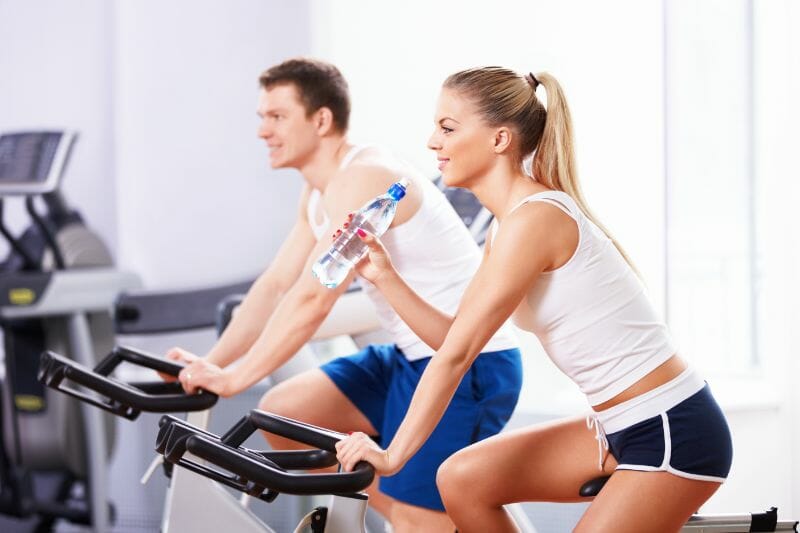
This helps me maintain my performance level and prevent dehydration.
After the ride, I make sure to rehydrate with more water or an electrolyte drink as soon as possible to restore balance in my body.
Taking these steps helps ensure that I stay properly hydrated throughout my workout and avoid any potential health issues down the road.
Upper Body Strength Training for Cyclists
Upper body strength training is an important part of cycling, yet it is often overlooked.
Taking the time to focus on my upper body has helped me become a stronger and more efficient cyclist.
I often start with lightweight movements like lateral raises and bicep curls, using light dumbbells or resistance bands.
This helps warm up my muscles and get them ready for heavier exercises like chest presses and tricep extensions.
I usually stick to sets of 10-15 reps at a moderate weight level, focusing on proper form throughout each exercise.

For back exercises, I use machines or free weights to target specific areas like my lats and traps.
After completing an upper body workout, I can feel the difference in my riding performance almost immediately.
My arms are more powerful when pushing down on the pedals and my torso is more stable as I lean into turns.
The increased strength also helps prevent injury by providing extra support to vulnerable areas like my wrists and shoulders.
Incorporating upper body strength training into my routine has been beneficial both inside and outside of the saddle!
Final Thoughts
When planning an indoor cycling workout, it’s important to consider your personal fitness goals.
Make sure the bike is adjusted properly so you’re comfortable while cycling.
Use the cycling tracking app to monitor your performance.
Remember to go at a pace that’s comfortable for you and focus on having fun rather than pushing yourself too hard.
The more enjoyable your workouts are, the more likely you are to stick with them in the long run.
So take some time to plan out your indoor cycling sessions accordingly and enjoy every minute of it!





